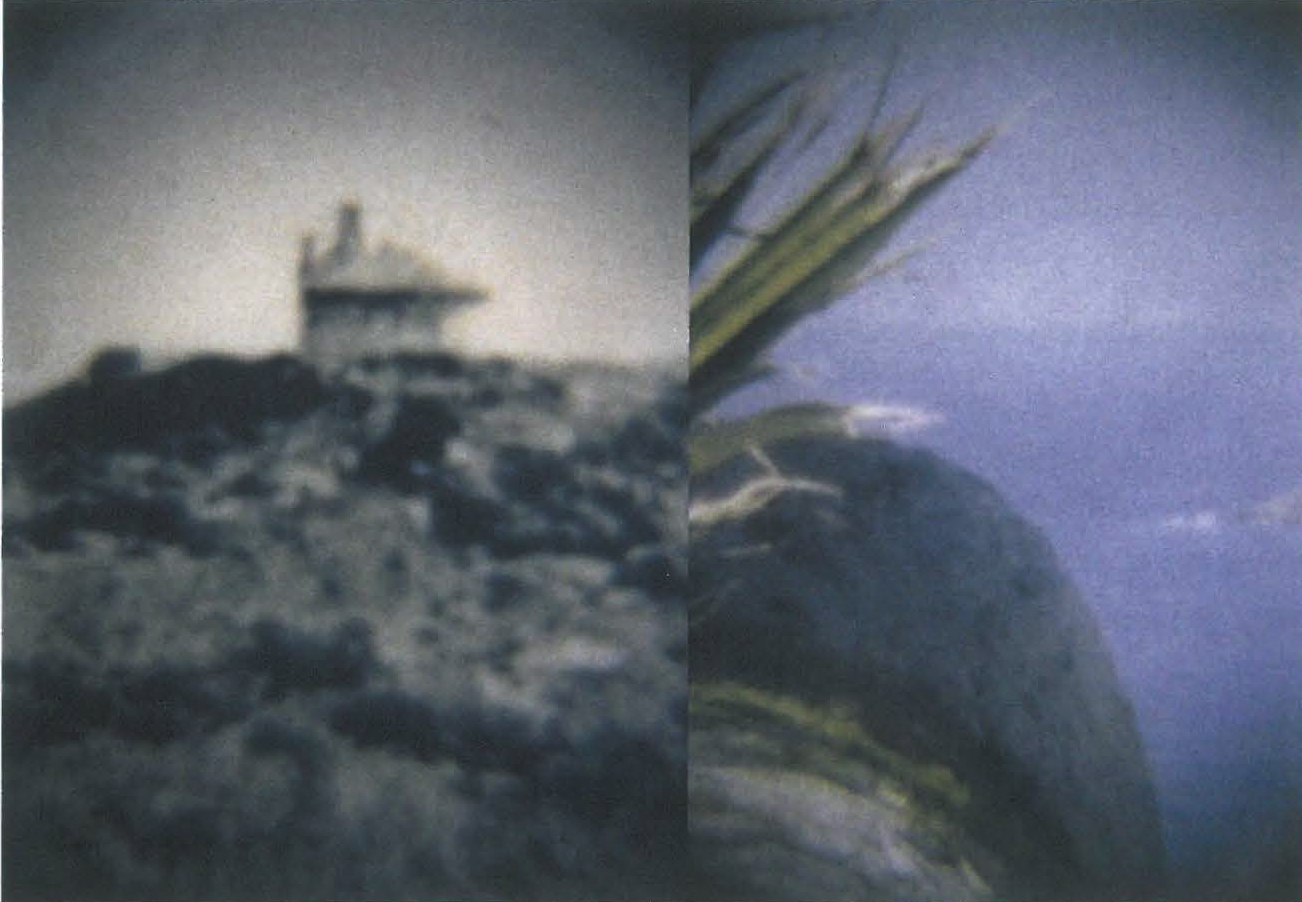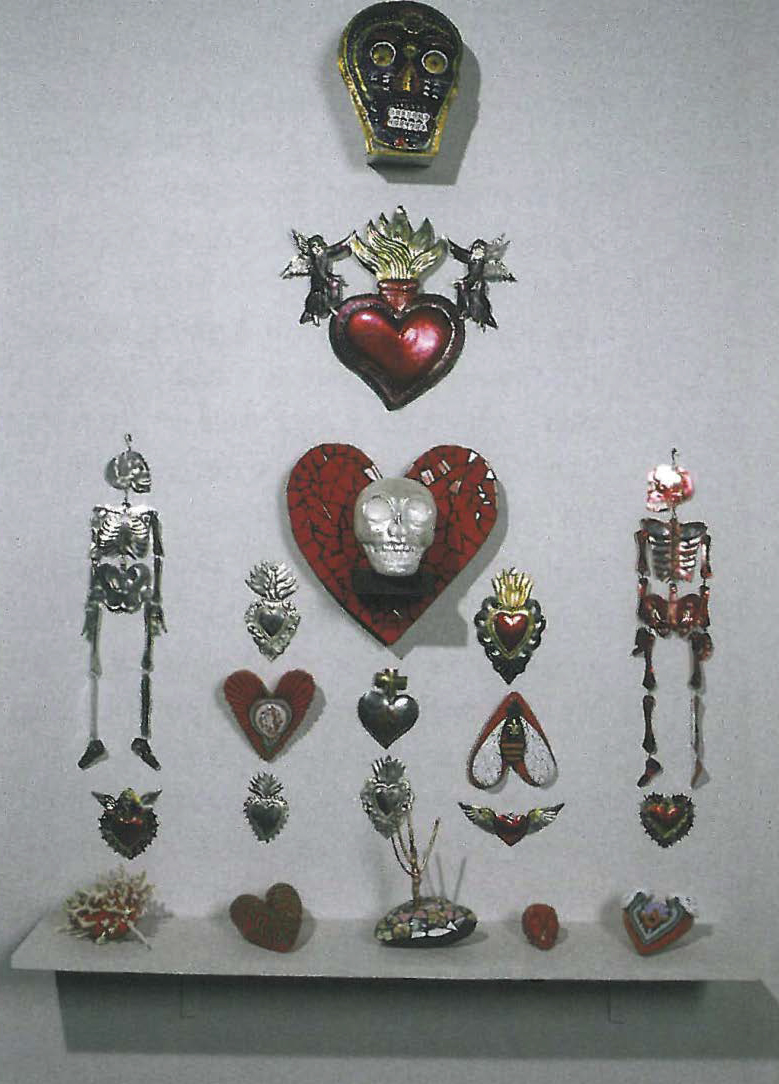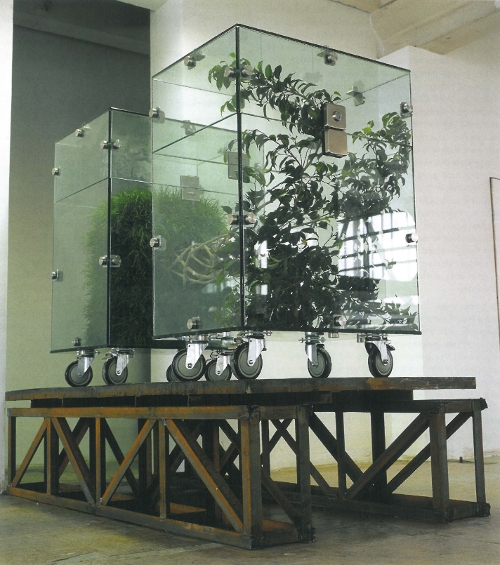
The Barcelona Studio: Fragments of a Brief History exhibition has been developed as a response to an Australian Research Council Discovery Grant, initiated by Jonathan Holmes as a way of exploring the role of the Australia Council studio residencies in the development of contemporary Australian art. In his explicatory essay in the exhibition catalogue, Holmes navigates us through the processes and permutations of his assigned task and provides us with a context to help orient us within and around the strategies of this exhibition. The Barcelona Studio is the first in a series of four survey exhibitions that will complement this research; the other locations to be highlighted are Paris, Tokyo and London.
From the artists' perspectives, the residencies undertaken seem to have been a unique and positive experience. They provided the artists with time and space to relax, away from the pressures of lifestyles back home, and get a fresh perspective on, and subsequent renewal of, their artistic practice. Within the restrictions of allotted time (the Barcelona residency runs for three months) and restrictive freight costs, Holmes reports that 'few artists & have produced major bodies of work whilst in residence', but what is significant, and attested, has been 'the extraordinary productivity that has come in the aftermath of these residencies'.
All of these artists - Paul Zika, Maureen Burns, Anne Ferran, Peter Atkins, Lorraine Jenyns and Elizabeth Gower have the maturity and professionalism to deliver on a premise and I took great delight in viewing and deliberating upon the results.
Anne Ferran's work in this exhibition - You are Here - is a device of evocation. She explores a supposed meeting between Walter Benjamin and the author Janet Frame on the island of Ibiza, near Barcelona, in 1956.
Ferran took many photographs of known and imagined places that the two writers may or may not have journeyed through whilst staying on the island. Photography's unequivocality, and Ferran's veiled surface of unfocused impressions, give this work the formative power to act as psychological narrative. This is realised in the presentation of her work as a sentimental journey through association and memory. It reminds me of journeys made, places seen, and the sensation that I have had this experience before - although I'm not sure when or where.
Paul Zika's contribution to this exhibition - Cornucopia 3 - is part of a series of works originally exhibited in 1999 that were the result of development work done during his stay at the Barcelona studio. A combination of local decorative design, local colours and patternings, the mosaic arrangements in local art nouveau architecture provided the foundations for the execution of this series. Inherent in the shapes, patterns and colours Zika presents here are designs of playfulness and excitement. These works are alive and mobile - the filigree flame of devotional object layered over a fibrous and sinewy underbelly of the commonplace - the everyday. These works are a reflection and a distillation of the emotional and cultural contradictions of the vibrant and energetic culture of Barcelona.

Lorraine Jenyns' Art of Excess is a combination of found object and other paraphernalia brought to Barcelona and her own small paintings and sculptures. The religiosity imbued into this amalgamation of objects creates sacramental altars or shrines that provide the visual stimulation for participation in a newly evolved (from the remnants of the old) spiritual discipline or philosophy. Jenyns' works use the symbols and icons of Catholic excess, voodoo cults, fetish magicians, adoration societies, nature cults, etc to trigger in us a deep desire for ritual, spirituality and ecstasy. The goddess of this new cult is Jenyns' end product Reliquary, a sculptured beatific vision that showers us all with the breast milk of immaculate motherliness - or perhaps they are pearls of infinite love. She is like the Virgin Mary, but with an enhanced capacity to be immediate, fundamental, enchanting.
The end products of these artists are not what we usually see in an exhibition of contemporary art. It is a unique insight into how artists, with similar circumstances of time and place, journey along different streams and avenues to arrive, prepared for an exhibition. My only wish was for more works (I'm not sure they exist) by these artists based on the Barcelona experience. It is a very interesting device for an exhibition, and I wanted to indulge a little more in the machinations of this process.












